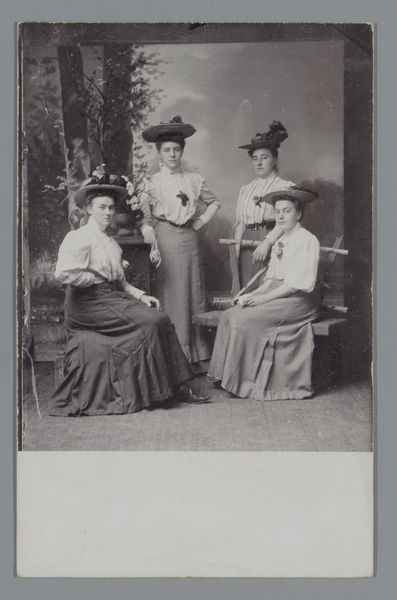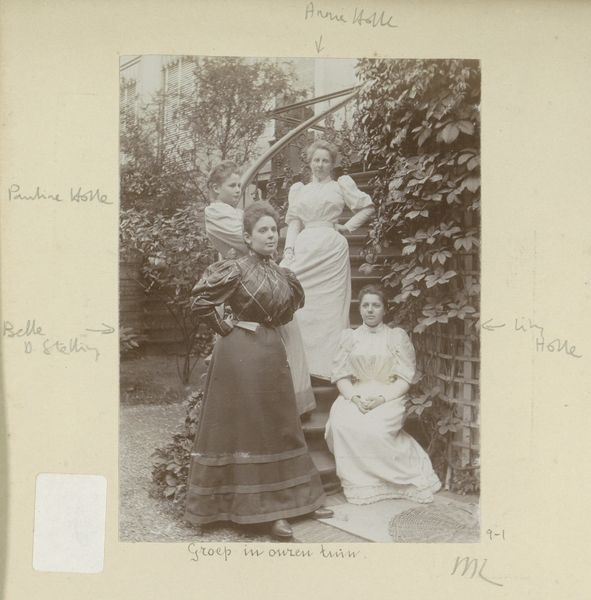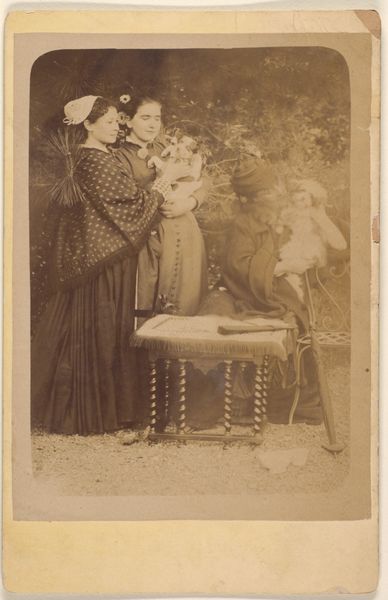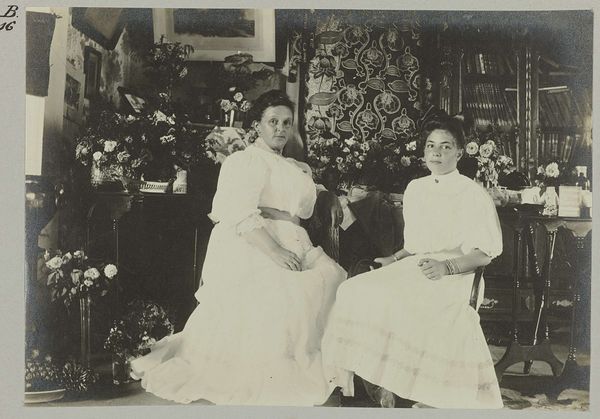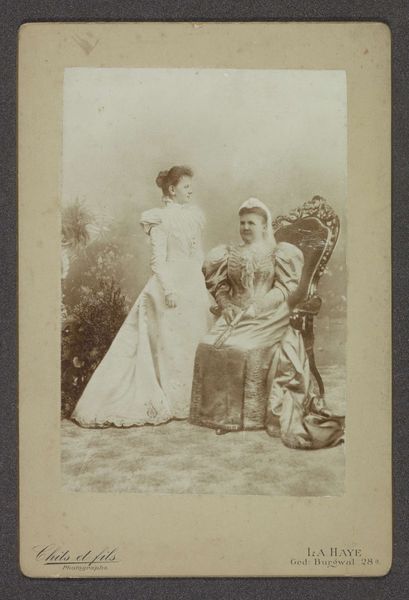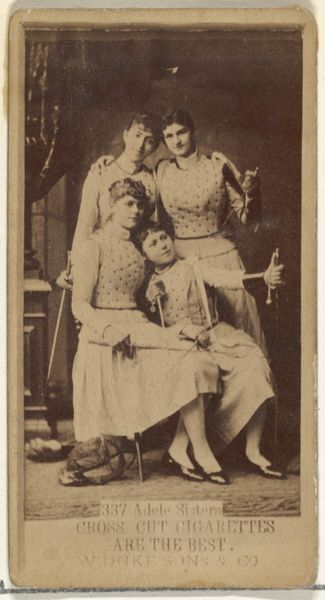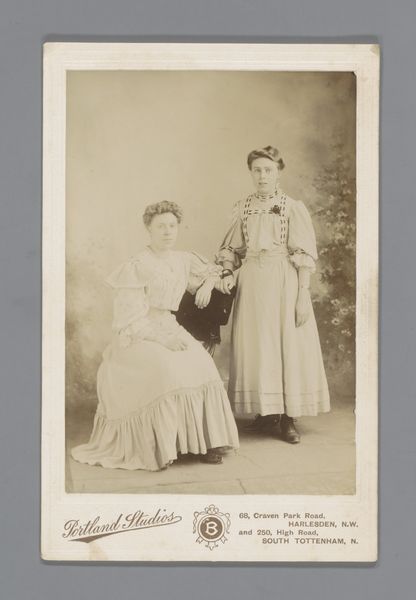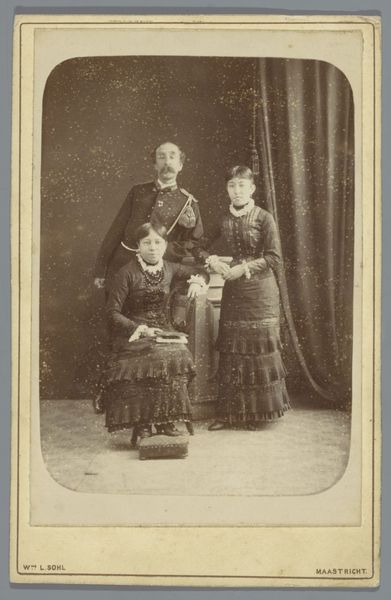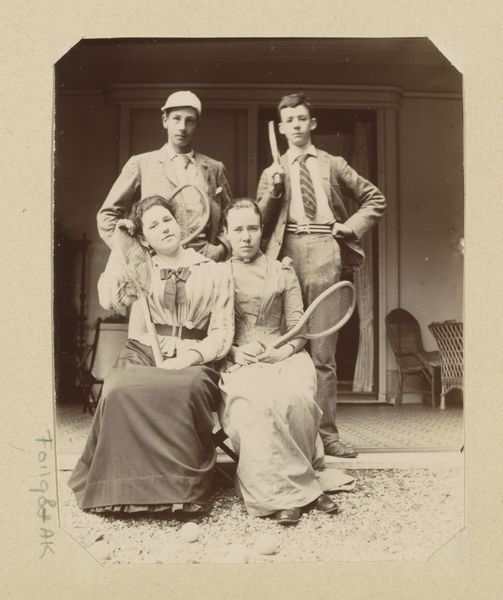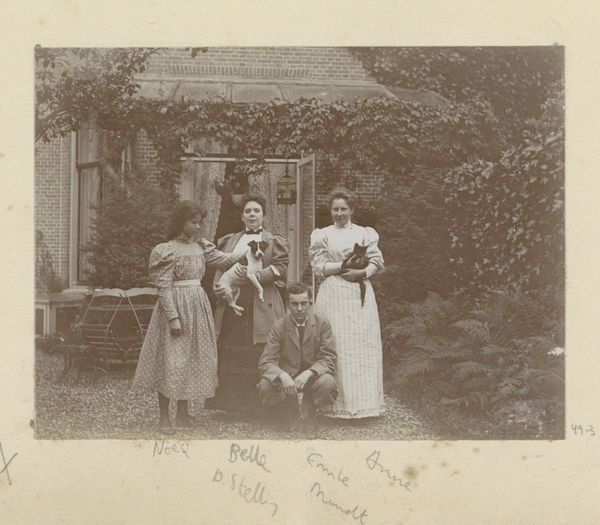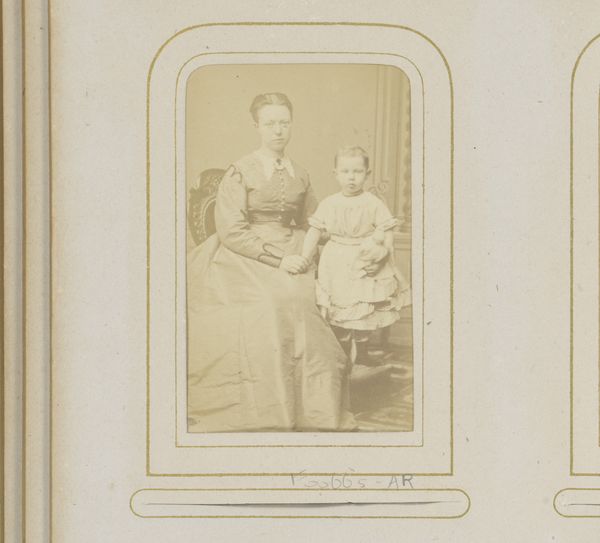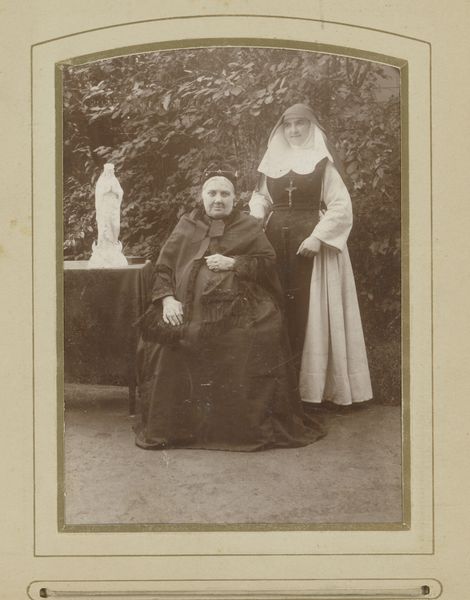
Dimensions: height 226 mm, width 170 mm, height 269 mm, width 199 mm
Copyright: Rijks Museum: Open Domain
This is a photograph called "Family Life at Pavia House in Zeist," made by Henry Pauw van Wieldrecht in the Netherlands, around the turn of the 20th century. Here we see three young women, likely sisters, posed on the steps of a grand house. The photograph provides us with a window into the domestic sphere of an upper-class Dutch family. During this time, photography was becoming more accessible, and was embraced by the middle and upper classes as a way to document their lives and project a certain image of themselves. The carefully arranged composition, the clothing of the sitters, and the setting all speak to the values and aspirations of this social group. What does the photograph convey about gender roles in that time? What does it convey about social class? To understand this image better, we might delve into the history of Dutch photography, the social customs of the time, and the lives of the Pauw van Wieldrecht family. Only then can we appreciate the full social meaning embedded in this photograph.
Comments
rijksmuseum about 2 years ago
⋮
These photographs reveal Pauw van Wieldrecht’s development from amateur to exceptionally talented photographer. His key subjects were family and domestic life in and around the family homes, travels, outings, and hunting. We see the photographer’s nephew Reinier (1897), brother Maarten defending himself from a charging (stuffed) wild boar (May 1898) and the domestic staff (August 1897).
Join the conversation
Join millions of artists and users on Artera today and experience the ultimate creative platform.
